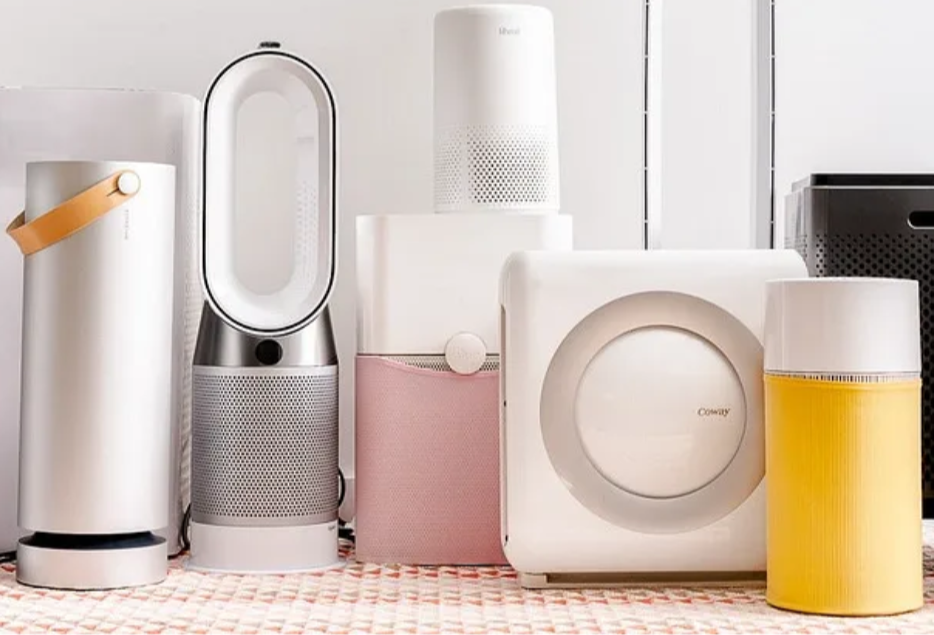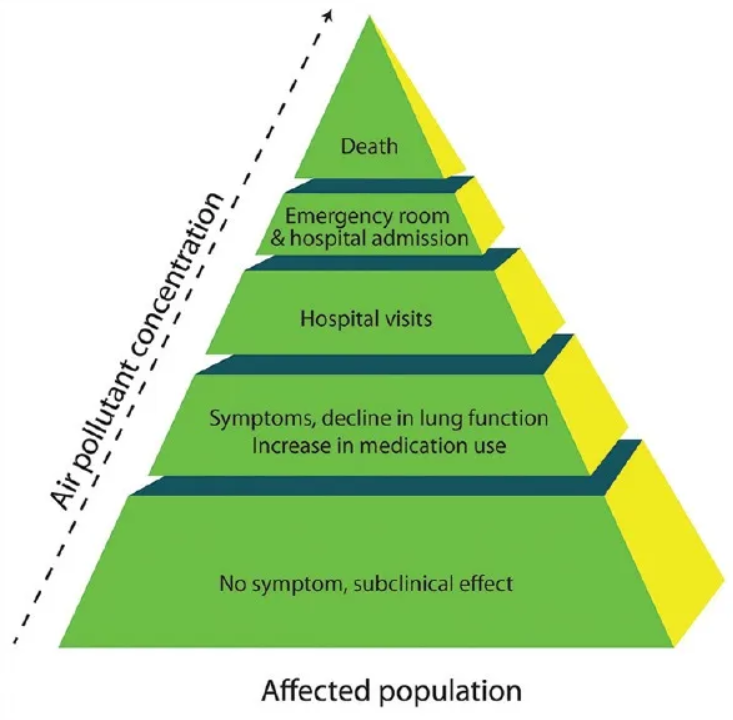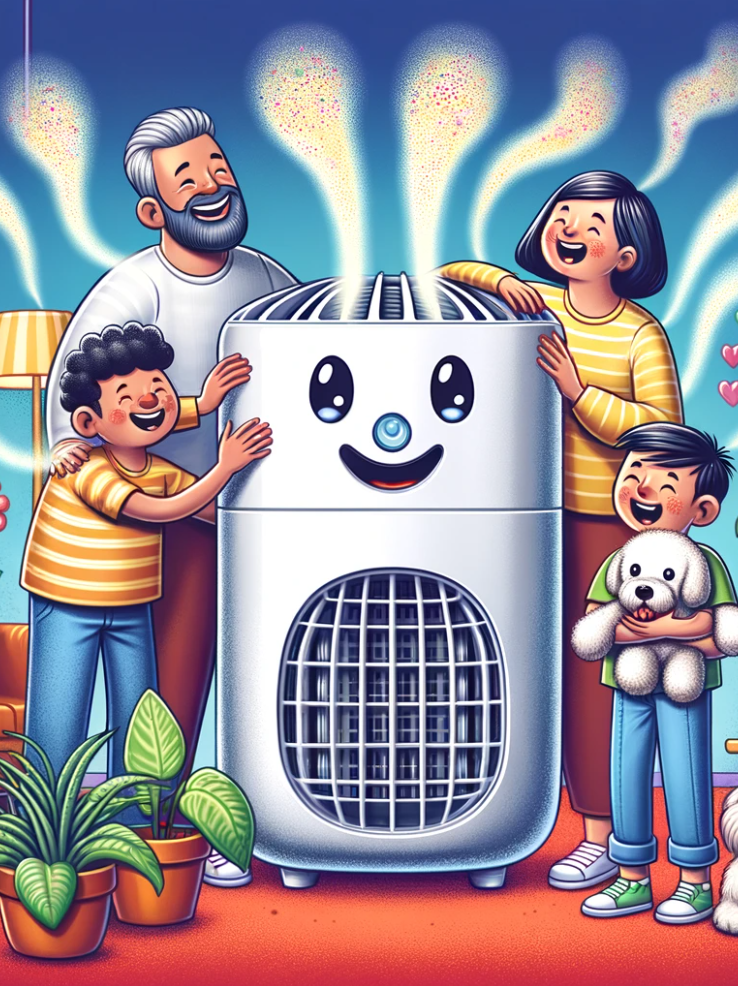Kyle's Blog
The Coming Tyranny of Air Purification
Or, Why Adding an Air Purifier To Your Home is the Single Most Important Thing You Can Do to Improve Your Health
For Your Health
WHO Agrees?
The WHO factsheet on HAP and health states that 3.8 million premature deaths annually — including stroke, ischemic heart disease, chronic obstructive pulmonary disease and lung cancer are attributed to exposure to household air pollution.
Whats the solution?
Use of air cleaners and filters are one of the suggested strategies to improve indoor air quality. This review discusses the impact of air pollutants with special focus on indoor air pollutants and the benefits of air filters in improving indoor air quality.
The Contenders

INTRODUCTION
The human lungs are excellent at air filtration but that is not what you want to be using yours for. In order to extract the 400 liters of oxygen that is crucial for survival, a total of 10,000 liters of air enters the lungs every day. The quality of air we breathe determines the health of the lungs as well as other organs. Thus, clean air is a basic requirement of human health. However, air pollution continues to pose a significant threat to health worldwide. The World Health organization (WHO) reports that seven million people die each year as a result of air pollution exposure, confirming that air pollution is now the world’s number one environmental health risk.
The impact of pollution on respiratory health is well known.
The WHO factsheet reveal that, there exists a stronger link
between air pollution exposure and cardiovascular diseases,
such as strokes and ischemic heart disease, as well as between
air pollution and cancer.
In the recently published analysis of the largest ever
population based study on the distribution, causes and risk
factors of a wide array of major diseases across the world,
the Global Burden of Disease (GBD) study, exposure to air
pollution and particulate matter was globally ranked as one of
the top 10 risk factors for disease.
The quality of air inside homes, offices, schools, day care
centers, public buildings, health care facilities or other
private and public buildings where people spend a large part
of their life is an essential determinant of healthy life and
people’s well-being, says the WHO Guidelines for Indoor Air
Quality. Hazardous substances emitted from buildings,
construction materials and indoor equipment or due to human
activities indoors, such as combustion of fuels for cooking or
heating, lead to a broad range of health problems.
The Pyramid of Death

1. EFFECTS OF OUTDOOR AIR POLLUTION
Exposure to air pollution can lead to a wide range of short-
and long-term effects. Temporary short-term effects include
discomfort such as irritation to the nose, throat, eyes, or skin
or headaches, dizziness, and nausea. Air pollution can also
cause respiratory conditions such as pneumonia or
bronchitis.Long-term effects of air include heart disease, lung
cancer, and respiratory diseases. That air pollution can cause
exacerbations of pre-existing asthma is supported by
accumulating evidence over several decades.
Several large studies suggest that pollutants exert significant
effects on the cardiovascular system. It has been shown that for
any increase in mortality caused by pollutants, two-thirds of
the effect was accounted for by cardiovascular diseases.
Chronic exposure to pollutants results in vascular inflammation
and acute exposure causes changes in blood flow and overall lung
health. Increase in pollution has been linked to increased
hospital admissions for congestive heart failure and heart
disease.
2. INDOOR AIR POLLUTION
Indoor air pollution is a complex mixture of pollutants
migrating indoors from outdoor air and pollutants generated by
multiple sources.
Documented evidence on indoor pollutants in the urban
environment is somewhat limited. It is however, very apparent
that there has been continuous deterioration of ambient air and
human health with the increase in population, industrialization,
and urbanization. Improper management of transport, primitive
roads, high construction activity, and unplanned distribution of
industries –all have led to an increase in the pollution levels.
Residential complexes adjacent to industries related to dyes,
textiles, timber and furniture, handicrafts, metals, chemicals,
sandstone quarries and oil mills, etc., are responsible for a
rise in a variety of indoor pollutants. Increasing emission of
toxic pollutants such as particulate matter and green house
gases like ozone, sulphur dioxide, nitrous oxide, etc., has been
reported from various cities. Burning of fossil fuels by humans
also adds up to pollute the atmosphere.
Tobacco smoke has been well recognized as an indoor pollutant,
with severe health risks to children and elderly.
3. SIZE MATTERS
Pollutants are particulate matter and are described by their
“aerodynamic equivalent diameter” (AED). Particles of the same
AED tend to have the same settling velocity.
Particulate matter is subdivided into fractions based on where
they deposit in human airways <10, <2.5, and <0.1 μm
(PM10, PM2.5, and PM0.1).
Particles with a diameter greater than 10 μm have a relatively
small suspension half-life and are largely filtered out by the
nose and upper airway.
Those with a diameter between 2.5 and 10 μm (PM2.5–10) are
classified as “coarse,” less than 2.5 μm as “fine,” and less
than 0.1 μm as “ultrafine” particles.
Particles <10 μm in diameter are capable of entering the
respiratory system, and particles <2.5 μm are capable of
reaching the alveoli and ultrafine particles systemically affect
the blood and organs such as the heart and even the brain.
4. FILTRATION OF INDOOR AIR
Several measures are recommended to reduce exposure to
contaminants of biological origin (dust mites, household pets,
mold and mice) and non-biological origin (tobacco smoke, wood
smoke, volatile organic compounds). With a better understanding
of indoor pollutants, new and effective measures have evolved,
including the development of indoor air filters.
Air filtration is frequently recommended as a component of
environmental control measures. Indoor air filtration can be
provided by whole house filtration via the home’s heating,
ventilation, or air conditioning system, by portable room air
cleaners, or a combination of the two.
The key attribute of any air filter, is a balance of the
following:
Air flow to assure adequate ventilation.
Efficiency to filter out a range of small particle sizes.
Capacity to allow for reasonable cost-effective maintenance
schedules without adversely affecting airflow and efficiency.
Currently available air purifiers usually use a multilayer
filter system composed, often of a prefilter, a carbon filter,
an antibacterial filter, and a HEPA filter.
The use of HEPA filters traditionally used in hospitals, has
indeed been a significant inclusion to home air purifiers. A
HEPA filter uses mechanical filtration to remove airborne
particles. A HEPA filter is standardized at a minimum 99.97%
efficiency rating for removing particles greater than or equal
to 0.3μm in diameter.
5. AIR FILTER EFFICACY
A study by van der Heide et al., assessed the efficacy of
air-cleaners with respect to their capacity to capture airborne
allergen particles. Over a 6-month period, the efficacy of air
filters to capture particulate matter and allergens was
measured. The study included three interventions -application of
active air-cleaners in living-rooms and bedrooms, placebo
air-cleaners used in combination with allergen-impermeable
mattress covers or active air-cleaners used in combination with
allergen-impermeable mattress covers.
The last filter consisted of a high efficiency particulate air
(HEPA)-type filter, filtering 70% of 0.3-μm particles and 95% of
1.0-μm particles. The air cleaners in this study clearly showed
the capacity to capture substantial amounts of airborne dust
particles and airborne allergens.
Another study, a randomized controlled trial, evaluated the
effectiveness of free-standing air filters and window air
conditioners in 126 low-income households of children with
asthma. It was found that a reduction in PM, by an average of 69
to 80% suggested that while PM levels in homes with asthmatic
children can be high, levels can be dramatically reduced using
filters.
6. AIR FILTERS IMPROVE OVERALL HEALTH
In a year-long, randomized, parallel-group study, Francis et
al., measured the clinical outcomes for the use of indoor HEPA
air cleaners of 30 adult asthmatics who were sensitized to, yet
lived with an indoor cat or dog. Outcomes were statistically
improved in the treatment group over the controls.
Another study by Sulser et al., compared sham versus HEPA
portable room air cleaners in asthmatic children sensitized to
cat or dog. A significant reduction in nocturnal symptoms
including stuffy nose was observed in the HEPA filter group.
Exposure to particulate matter is associated with risk of
cardiovascular events, as a consequence of oxidative stress and
inflammation.
The effects of controlled exposure to indoor air particles were
studied in a healthy elderly population. The study suggested
that a reduction of particle exposure by filtration of
recirculated indoor air for only 48 hours improved lung health
elderly citizens and suggested that this may be a feasible way
of reducing the risk of cardiovascular disease
In one study by Weichenthal et al. the benefits of an
electrostatic air filter was assessed in residents from 20
homes. The indoor PM2.5 decreased substantially during the
period when air filter was used relative to placebo and on
average, air filter use was associated with a decrease in
systolic blood pressure.
SUMMARY
Despite the rapid rise in environmental pollutants, the causal
pathways leading to adverse health effects is often complex and
poorly understood.
Children, the elderly, and women are most vulnerable to
potential indoor air pollution health effects because they spend
more time in the home environment.
There are many sources of indoor air pollution. Air pollution
inside homes consists of a complex mixture of agents penetrating
from ambient (outdoor) air and agents generated by indoor
sources. Indoor pollutants can vary in their potential health
effects and intensity, as well as in their distribution across
geographic areas, cultural backgrounds, and socioeconomic
status. Exposure to indoor air pollutants can cause health
effects ranging from sneezing and coughing to exacerbation of
chronic respiratory disorders such as asthma and outcomes such
as cardiovascular disease and even cancer.
Studies appear to suggest, that reduction in particulate matter
and allergens results in reducing symptoms and in certain cases,
preventing disease progression across all age groups, including
the elderly and children. The evidence is apparent, in chronic
respiratory diseases, such as asthma and in cardiovascular
health.
Technologically advanced air filter systems are now available
which efficiently remove particulate matter, resulting in
significant health benefits to patients of asthma and
cardiovascular disease.
KEY WORDS: Air filters, air pollution, cardiorespiratory health, enhancing indoor air quality, HEPA
